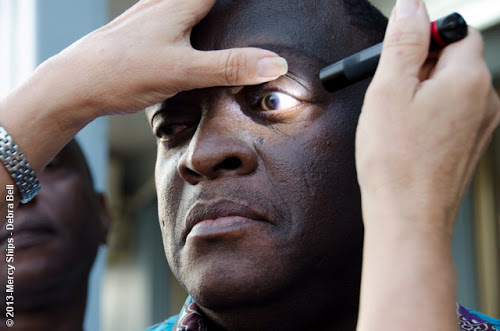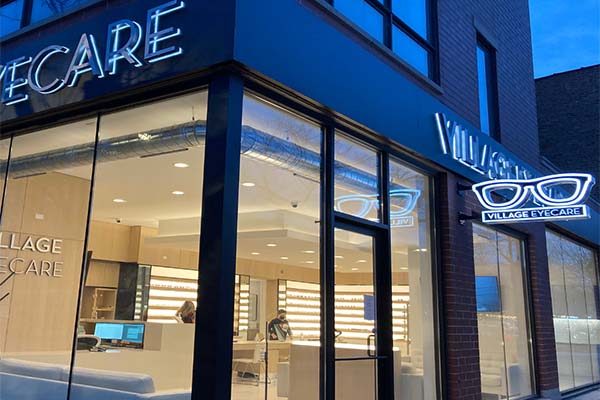Eye Center Andalusia: State-of-the-Art Look After All Ages
Eye Center Andalusia: State-of-the-Art Look After All Ages
Blog Article
Comprehending the Various Vision Modification Procedures Available for Clearer View
In the realm of vision improvement procedures, a multitude of alternatives exist to attend to refractive errors and provide people with clearer view. Let's check out the complexities of these procedures and lost light on the course to accomplishing enhanced vision clearness (Neurologist Andalusia).
LASIK Surgical Procedure
LASIK surgical procedure is a common refractive procedure made use of to deal with vision problems such as farsightedness, astigmatism, and nearsightedness. This medical technique, which stands for Laser-Assisted in Situ Keratomileusis, intends to reshape the cornea to enhance just how light is concentrated on the retina, inevitably enhancing vision quality. During the procedure, a thin flap is produced on the cornea, and a laser is utilized to get rid of exact amounts of cells to improve it suitably. This reshaping enables light to be properly concentrated onto the retina, correcting refractive errors.
Among the main benefits of LASIK surgical treatment is the rapid improvement in vision experienced by patients. Several people observe a substantial enhancement in their vision right away after the procedure. Additionally, most clients report minimal discomfort and pain throughout the surgical procedure and recuperation duration. The recuperation time for LASIK is relatively quick, with numerous people returning to their daily activities within a day or more post-operation. Overall, LASIK surgery is a preferred option for individuals looking for a long-lasting solution for their vision troubles.
PRK Procedure

PRK is an ideal choice for people with slim corneas or those at a greater risk of eye injuries, as it does not involve producing a corneal flap. The recuperation process for PRK is a little longer contrasted to LASIK, as the epithelium needs time to regrow. People might experience discomfort and fuzzy vision for a few days following the procedure.
Regardless of the longer recuperation time, PRK can yield exceptional outcomes in vision renovation, making it a valuable alternative for those who might not be ideal prospects for LASIK surgical procedure. - Andalusia Pediatrics
Implantable Lenses
In comparison to PRK where the cornea is improved directly, implantable lenses offer one more technique for correcting vision by inserting fabricated lenses inside the eye. This treatment is especially helpful for individuals with high degrees of nearsightedness, farsightedness, or astigmatism that might not appropriate prospects for laser surgical procedures like LASIK or PRK.
Implantable lenses, likewise known as phakic intraocular lenses, job by supplementing the eye's natural lens with an artificial one. These lenses can be placed in front of the all-natural lens (anterior chamber) or behind the iris and before the all-natural lens (posterior chamber) By changing the power and positioning of these lenses, ophthalmologists can properly remedy refractive mistakes and boost visual acuity.
One benefit of implantable lenses is that they are exchangeable and removable, providing versatility for future changes. Nonetheless, just like any kind of procedure, there are risks involved, such as infection or pop over to this web-site cataract development. Individuals thinking about implantable lenses should seek advice from with an eye care specialist to figure out the most ideal choice based on their private needs and eye wellness.
Corneal Rings

The procedure for placing corneal rings is minimally invasive and relatively quick, usually performed as an outpatient procedure. During the surgical treatment, the eye doctor makes a small incision in the cornea and inserts the rings at a certain deepness. Once in location, the rings assist to improve the cornea, providing a smoother surface for light to get in the eye, which can result in more clear vision.
Corneal rings are considered a reversible procedure, as they can be removed or replaced if required. While they may not completely eliminate the need for glasses or get in touch with lenses, corneal rings can substantially boost vision high quality and general visual comfort for individuals with keratoconus or other corneal irregularities.
Refractive Lens Exchange
Following the correction of Check This Out corneal irregularities with treatments like corneal rings, an additional vision correction technique that can address refractive errors is Refractive Lens Exchange (RLE) RLE is a procedure that entails changing the eye's all-natural lens with a man-made intraocular lens (IOL) to fix refractive errors such as presbyopia, nearsightedness, and farsightedness. This treatment is particularly beneficial for people who might not be appropriate candidates for treatments like LASIK or PRK because of factors such as slim corneas or high refractive errors.
Recuperation time for RLE is relatively quick, and individuals can anticipate improved vision soon after the procedure. As with any type of medical procedure, prospective dangers and difficulties exist, so a comprehensive appointment with an eye care professional is vital to establish if RLE is the right vision adjustment choice.
Verdict

In the world of vision modification procedures, a multitude of alternatives exist to attend to refractive errors and give individuals with clearer sight.LASIK surgical procedure is an usual refractive treatment utilized to correct vision troubles such as astigmatism, farsightedness, and nearsightedness.While likewise an usual refractive procedure, the PRK (Photorefractive Keratectomy) strategy differs from LASIK surgical procedure in its method to correcting vision issues.Following the modification of corneal irregularities with procedures like corneal rings, an additional vision adjustment strategy that can address refractive mistakes is Refractive Lens Exchange (RLE) LASIK surgery, PRK procedure, implantable lenses, corneal rings, and refractive lens exchange are all Go Here alternatives that can address different vision concerns.
Report this page